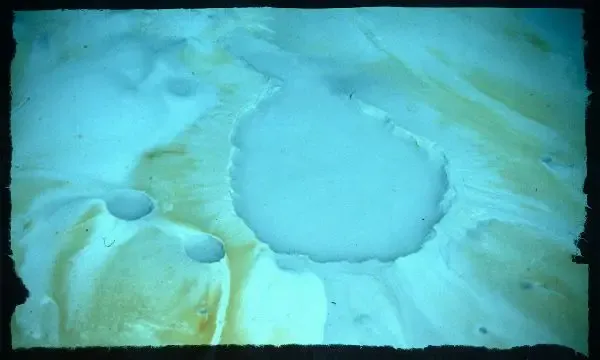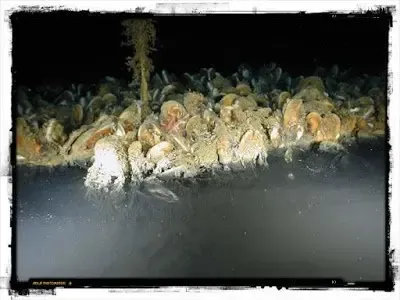Curious Deep Sea Communities - Student Guest Post
Today's post is going to amuse, amaze and cause a stir within to study our greatly unexplored oceanic abyss looking at the deep sea communities. Students from the NatureGlo's eScience Dramatic Deep-sea Creatures online course have been "diving deep" with their blogging research from the latest deep sea research using NOAA and MBARI's deep-sea research.
Without further blogging on my part, let's have a look at this post from talented 14-year old student writer, Sophie C. from the Dramatic Deep-sea Creatures online course.
A Day at the Lake {aka Brine Pool} by Sophie C.
Spring is the perfect time for a trip to the lake but it's still a bit chilly up here in the Nort. So, let's head down south on a class field trip. I know just the spot. It's the Gulf of Mexico. We will need a submarine. We're heading to just over 2,000 feet down so we had better pack some lights; it's dark and cold. We will head south a bit, over this ridge and...there it is - a lake under the ocean.
Welcome to a brine pool. The water is 4 - 5 times salter than the ocean so the two bodies of water don't mix. The brine pool sits on the bottom of the ocean floor with its own shore and waves, just like a normal lake. Well, maybe not quite normal. With such super levels of salinity, it's rather toxic.
There are only a few single-celled extremophiles living in the water. When crabs fall in...well, they get fried, and not in a good way. Swimming is out anyway because w would float. WE couldn't get below the surface with the buoyancy of this water. I know: we will head to the beach. Oops! It seems that someone got there before us.
Extended in a thick, deep bed goin out 5 meters from the edge of the lake are beds of mussels. I'm talking 2,250 mussels per square meter! There's no place for us to spread out our towel...and well, we're under water so it would float away anyway.

A brine pool. Image credit: NOAA
Deep-sea Communities member:
The Mussells Bathymodiolus childressi
The mussels, Bathymodiolus childressi, occupy exactly the same role as the cold seep tube worms I wrote about last week. In fact, scientists consider brine pools to be cold seeps...with a lot of extra salt. So, briefly, bacteria lives in the gills of the mussels. This bacteria is able to turn methane gas, which is seeping out of the brine pool at a pretty good rate, into food through a chemosynthetic process.
No sunshine is needed down here, thank you very much. The mussels provide a safe home for the bacteria and the bacteria shares its food with the mussels. And then the mussels provide food for other animals and an entire very productive ecosystem is established.

Deep sea brine pool mussels.
All this salt is making me hungry for french fries. Let's head to the surface for lunch and plan next week's field trip.
Sophie C.
Thanks for stopping by and reading Sophie's amazing article.
Isn't my student, Sophie, a creative and hilarious writer?
Please comment below for her.
Talk soon!
NatureGlo
